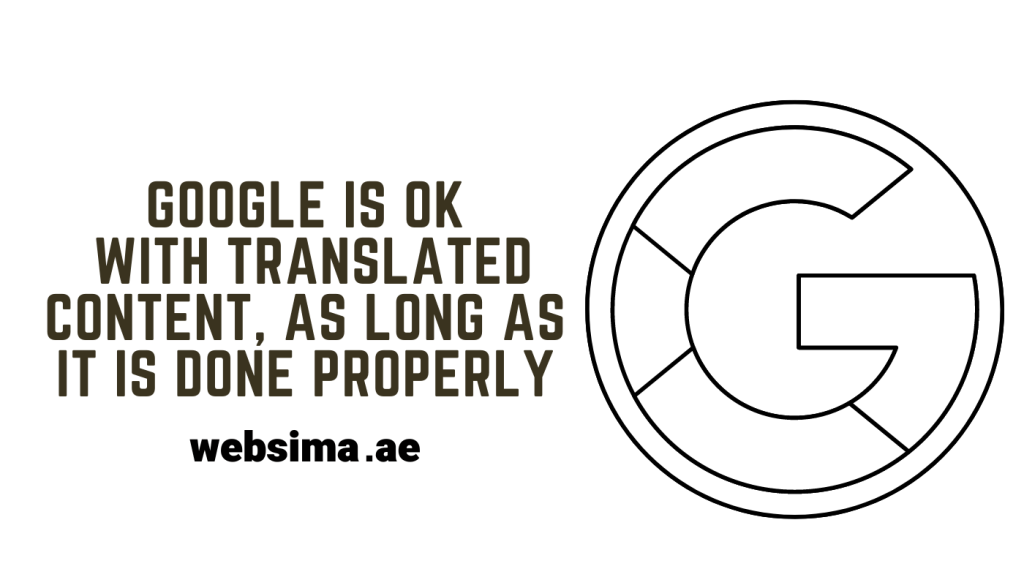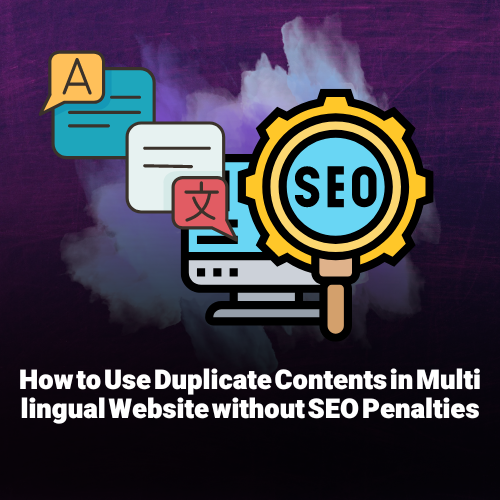How to Use Duplicate Contents in Multilingual Website without SEO Penalties
How to Use Duplicate Contents in Multilingual Website without SEO Penalties
As an online business owner, the most crucial goal you have is to improve your website’s UX. There are many tactics, techniques and features that are created to improve users’ experience and consequently your website’s SEO. One of the good features that can be added to your website, if operating internationally, is to translate your website to different languages. Going multilingual is now a necessity for online businesses who intend to operate globally. There are many benefits associated with having a multi-language website from an SEO perspective. However, such a feature has its own issues that must be resolved appropriately. One of the most important pitfalls a translated content may cause is to be spotted as a duplicated content by Google. It’s easy for Google to identify plagiarism and duplicated contents. Therefore, you will be penalized by Google for unintentionally issuing duplicate content.

The good news here is that Google is OK with translated content, as long as it is done properly. In other words, if Google is confident that the translated content belongs to a multilingual website that is targeting audiences in another country, Google wouldn’t consider it as plagiarism.
There are some approaches to take, in order to manage the content of your multilingual websites, in order to avoid being penalized by Google. Let’s dive in.
-
Creating Subdirectories under the main domain or LTD
This is the mostly used approach to manage duplicate content in a multilingual website. For instance, if your main domain name is www.example.com, the translated content in Spanish will reside in a subdirectory like www.example.com/es or the German version will be www.example.com/de. This approach is highly recommended, as you will be able to target your audience based on their language preference and the translated contents will not impact your ranking negatively.
-
Add Country Code to main Domain name
The other approach for multilingual websites is to create another website with the relevant country code to be added to the main domain name. For example, your website domain name for people living in France will be www.example.com.fr or www.example.com.cn to target your audiences living in China. By utilizing this approach, you will be able to target your audience based on their geographical location and country of residence. However, you firstly must consider the need for purchasing all domain names with the targeted country code. According to MOZ, using the country code approach tells Google that the content is written for a specific country and must appear for users who search from that particular area.
-
Subdomains creation
The next approach is to create a subdomain name for your website. That will be like fr.example.com for France and also French speaking people all around the world and say es.example.com for Spain and all Spanish speaking people around the globe. This is a great approach to utilize, as you will be capable of targeting your audiences based on both language preference and geographical location. A disadvantage associated with this approach is that the main domain name cannot be localized, so the visitors might get confused, which is not good for your website UX.
-
Let Google Know!
Another approach is to inform Google that your French website is a mirror of your English website and so does the Spanish website and so on! By doing so, Google will understand that you are targeting users based on their location or language, so no penalty will be in place for duplicated content. To do so, you must add some link elements in your main domain. Remember that such links must be entered in every single webpage in your website and also in its corresponding webpage of your other language website. Therefore, if you have a website with 300 pages, you must add the links in all 300 pages in both English and for example French websites. Hence, Google will easily understand that the French website is an alternate website of your English website, so no penalty for duplicated content will be considered by Google.
Bear in mind that adding these links to your website must be done by an experienced website developer, so don’t try to Google it to do it yourself!
Bottomline
It’s now a very good idea to go multilingual, if you own a business that is planned to operate internationally. Considering the fact that the majority of people from non-English speaking countries prefer to look for their needs in their own language, translating your website to other languages will improve your website UX and also gain competitive advantage for your business. To get the best result, consult with a reputable and professional web design and digital marketing service provider, in order to take your first step in the right direction. In addition, to avoid the plagiarism risks, you must work with a professional company, so you can rest assured that they take the necessary actions, as explained earlier in this article to mitigate such risks.






